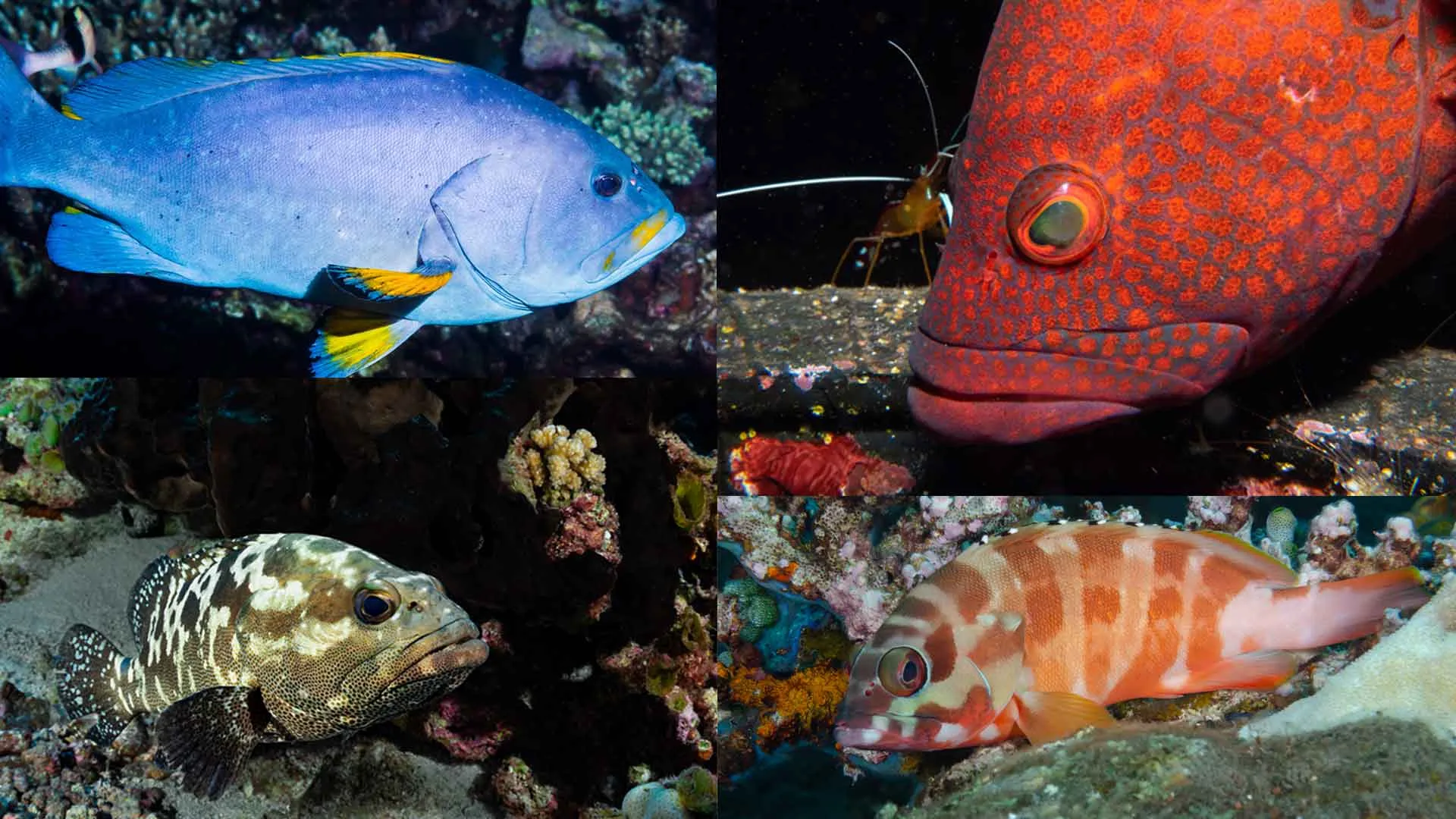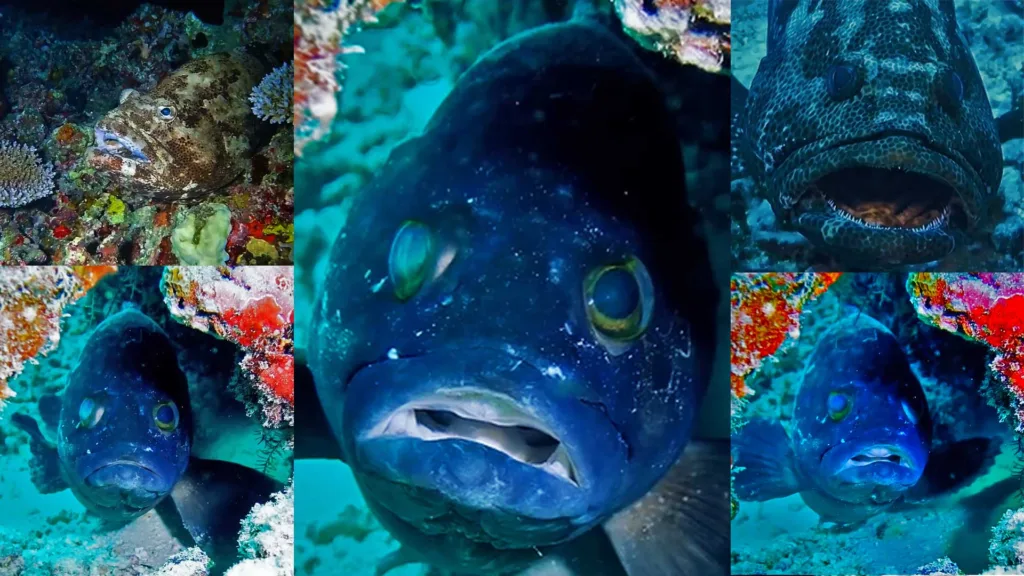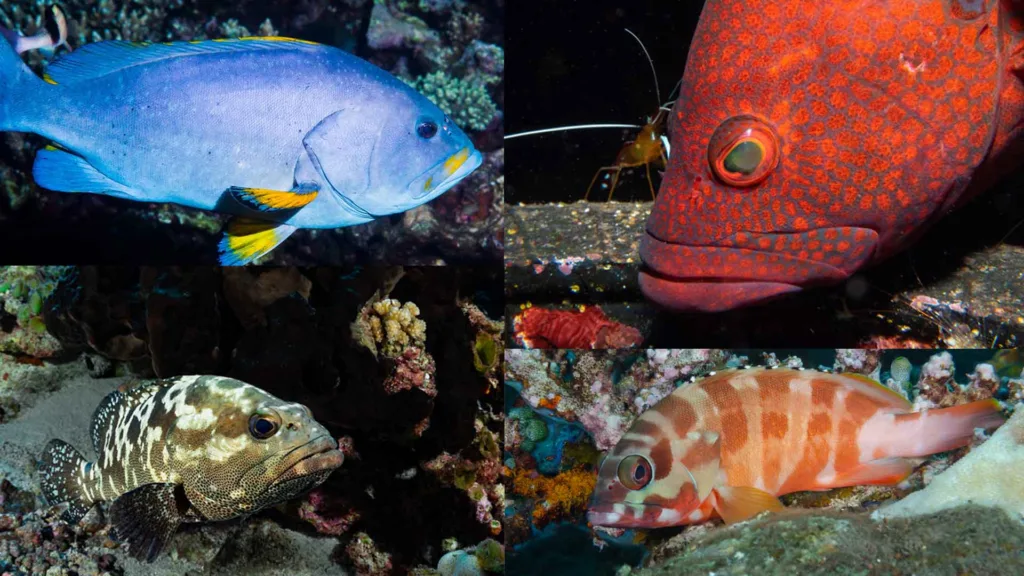
Groupers are one of the most delicious fish in the Maldives, popular among fishermen and locals alike. Groupers are known locally as “Faana.”. The Maldivian reef ecosystem is home to numerous species of groupers. And, from the long list of groupers in the deep, I have chosen 13 species that are very popular in the Maldives and are renowned for their delicacy.
Squaretail coral grouper (Plectropomus areolatus)
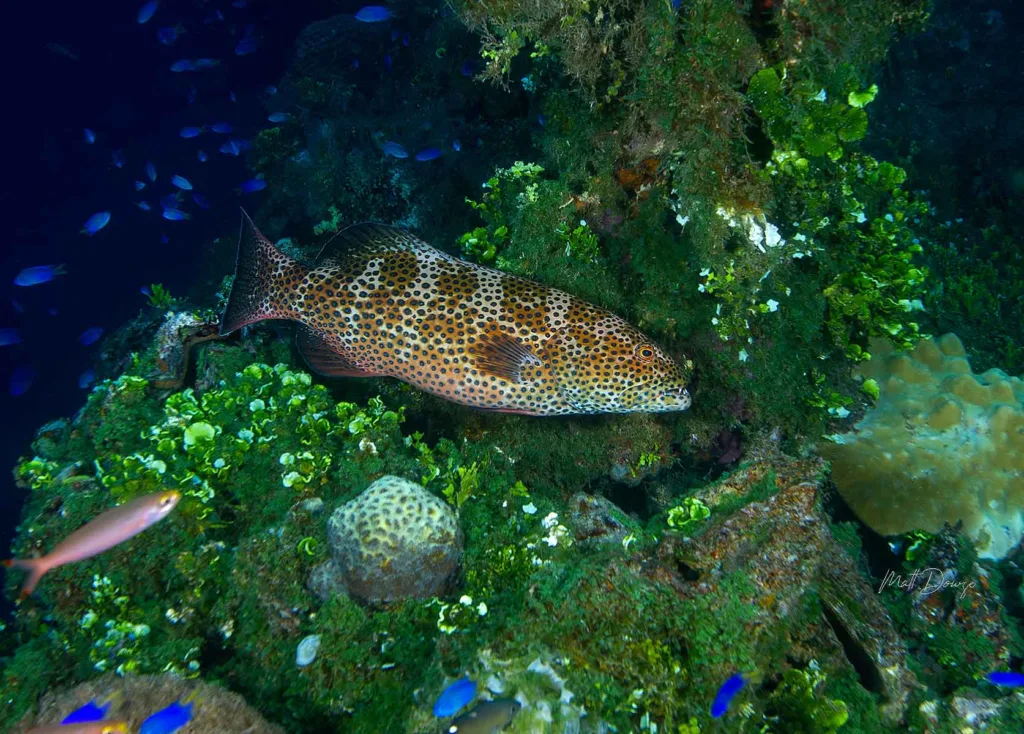
This grouper fish is extremely popular in the Maldives. The local name of this fish is “olhu faana”. It is mostly caught during the day but also at night. The meat of the squaretail coral grouper is extremely delicious. It is served with a variety of dishes. Squaretail coral grouper lives in lagoons and seashore reefs with depths ranging from 2 to 20 meters. This grouper feeds primarily on fish. Olhu faana has a large mouth and a relatively heavy, elongated body. It has a grayish-brown coloration.
Redmouth grouper (Aethaloperca rogaa)

Redmouth grouper is locally known as ‘ginimas’ and is one of the most popular reef fish in the Maldives. This is a favorite among fishermen and Maldivians. This grouper is a moderately common fish that usually appears alone on the reefs. It frequently associates with schools of baitfish seeking refuge in caves. Ginimas can be taken with handlines, but it bites slowly. The colour of this grouper is a uniformly dark brown.
Peacock hind (Cephalopholis argus)
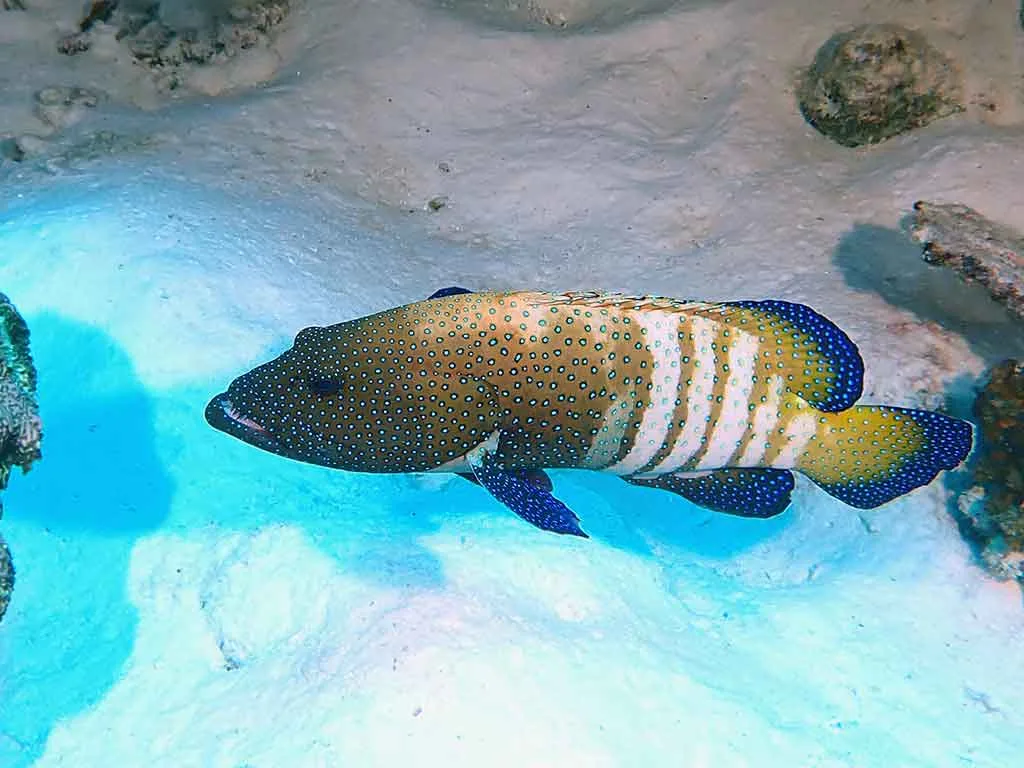
The peacock hind, locally known as “mas faana” is another popular fish among the Maldivians. This fish is typically caught by drop line fishing with sinkers. The peacock hind is the most common and widely distributed species in the genus. Many people agree that the peacock hind is a great fish to eat. The body, head, and fins are all dark brown. The entire body, including the fins, is covered with black-edged blue spots. Fins are dark. This species is a demersal fish that lives in lagoons and coral reefs up to 40 metres deep. It usually lives alone or in pairs and hides under coral ledges or in rocky crevices. Its primary food source is fish.
Leopard hind (Cephalopholis leopardus)
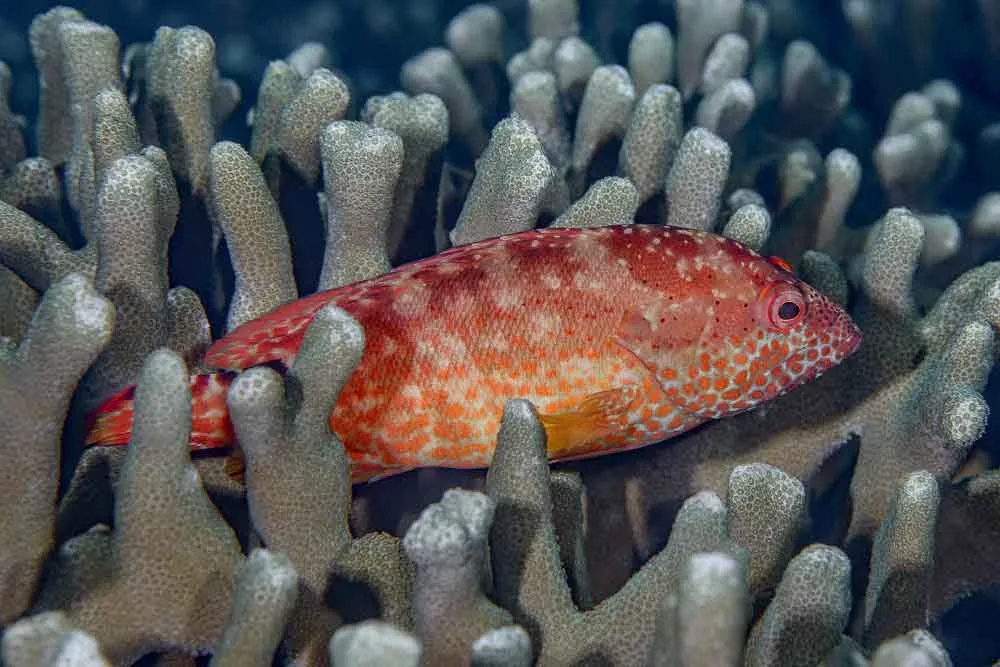
This reddish-brown, pale-below grouper is also a tasty fish. The fish’s body contains numerous orange spots. This species is also a delicious fish to serve at the table. This grouper is found on well-developed coral reefs at depths of 3–38 meters and prefers upper reef habitats. It feeds on crustaceans. The local name for this fish is rai thiki faana.
Coral Hind (Cephalopholis miniata)
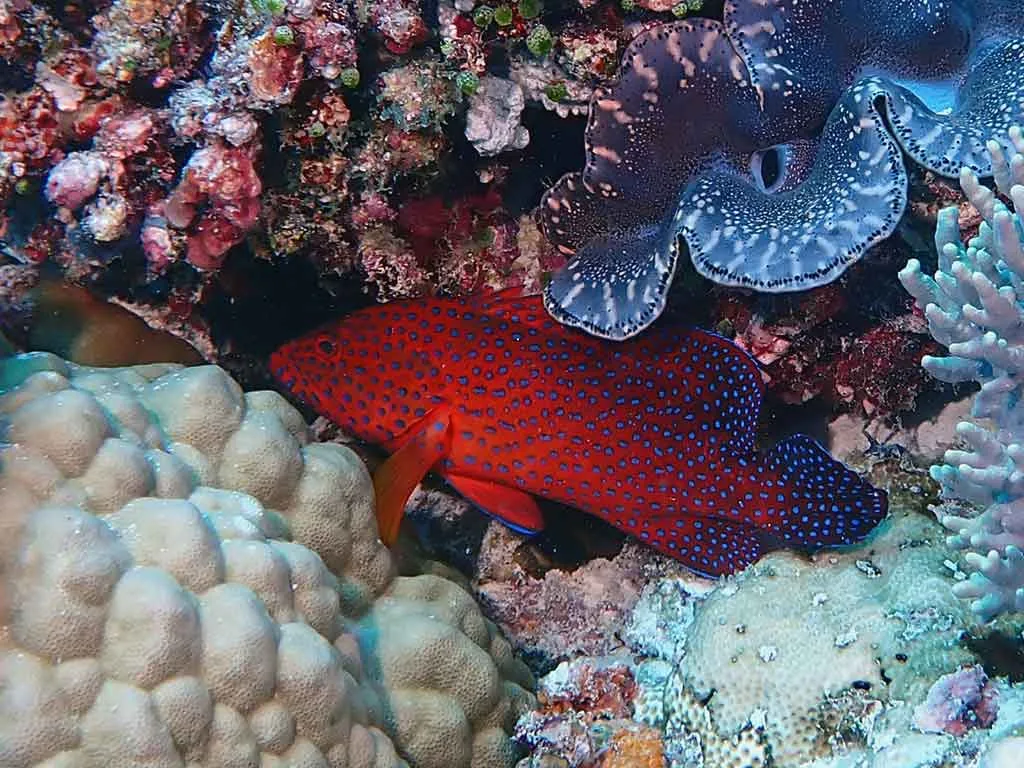
The local name for this grouper is koveli faana. This is one of the most common and visually appealing coral groupers. The coloring is a bright orange-red with numerous small blue spots covering most of the body except the underside of the jaw. Pectoral fins are yellow-orange at the distal end. It is found on well-developed exposed coral reefs in clear water at depths ranging from 2 to 150 metres. This grouper eats schooling fish and benthic invertebrates.
Tomato hind (Cephalopholis sonnerati)
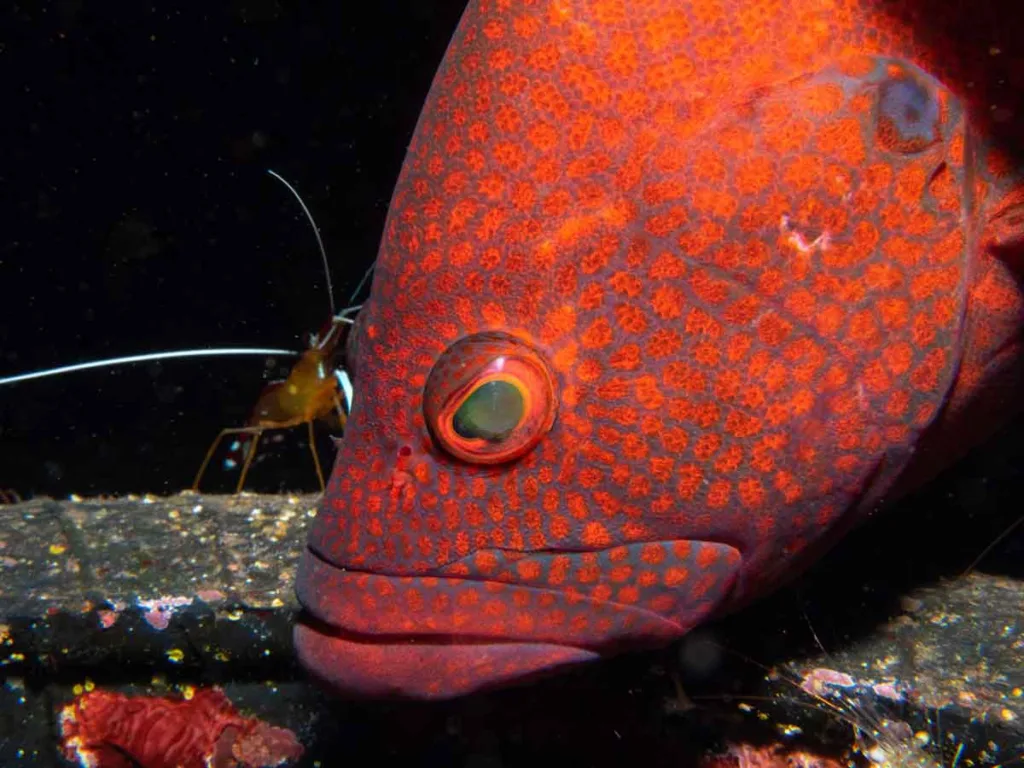
This is also a delicious grouper. The local name for this grouper is “veli faana”. The fish range in color from orange-red to red, becoming duskier as they grow larger. The fish has a few faint bluish-white spots. Its head is purple with several close-set orange-red spots. Veli faana lives on coral reefs and atoll basins at depths ranging from 30 to 100 meters (occasionally in shallower waters). This species primarily preys on fish and crustaceans. Veli faana lives in relatively deep habitats. This grouper was traditionally caught using a handline, and this method is still used today, though modern jigging techniques are used to land these species.
Brown-spotted grouper (Epinephelus chlorostigma)
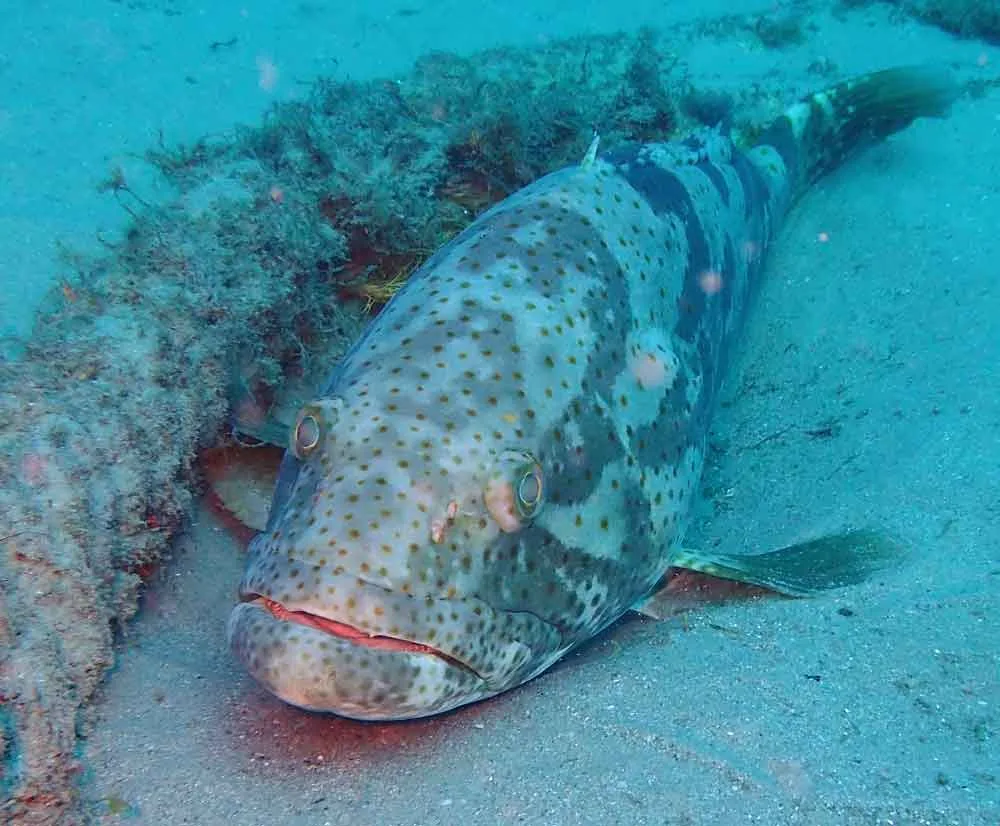
Brown-spotted grouper is locally referred to as “kulhandhuru faana”. This grouper is also a tasty fish. The fish is covered in tiny brown spots. The fish’s eye is colored orange. It lives at depths ranging from 4 to 280 meters in a variety of habitats, including seagrass beds and mud bottoms, but it is most commonly found on outer reef slopes. The fish primarily eats small fish and crustaceans.
Blacktip grouper (Epinephelus fasciatus)
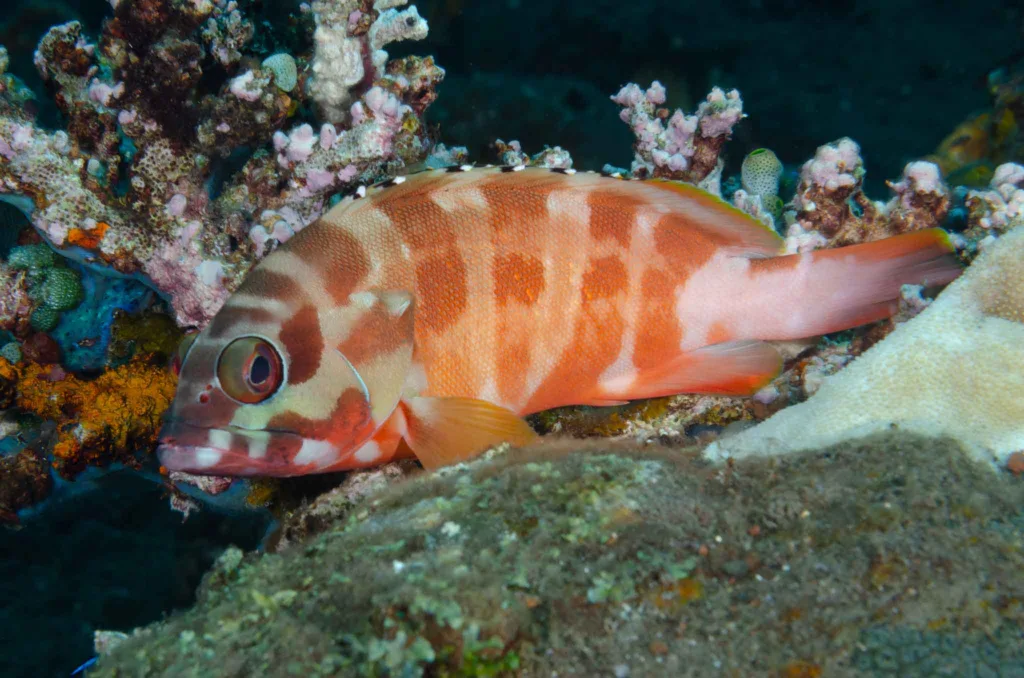
Blacktip grouper is pink and has red bands of varying intensity on its sides and head. The fins are reddish orange, pale yellow, green, or greenish brown. It lives on coral reefs, from the shore to a depth of 160 meters. It consumes a wide variety of crustaceans and fishes. The local name is “ras galhi Faana”. This fish is also a delicious grouper.
Blue and yellow grouper (Epinephelus flavocaeruleus)
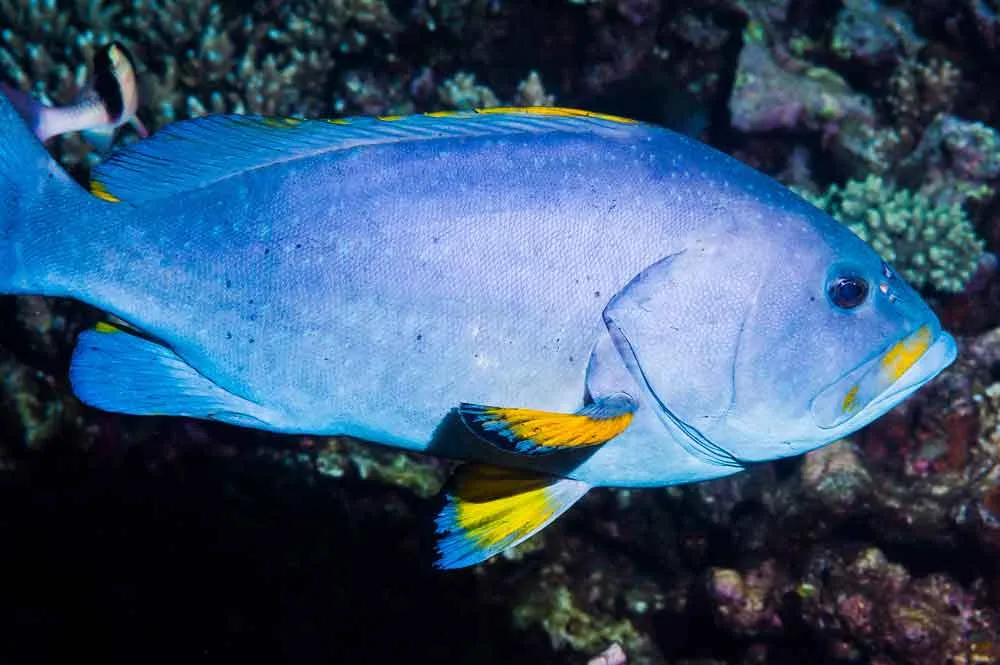
Blue and yellow grouper is locally known as “dhon noo faana” in the local language. It is dark blue or grey, with bright yellow markings. They live in shallow coral reefs, with adults on deeper reefs reaching depths of 150 m. They eat fish, crustaceans, and cephalopods. It is uncommon in the Maldives, but fishermen do catch it on occasion.
Honeycomb grouper (Epinephelus merra)
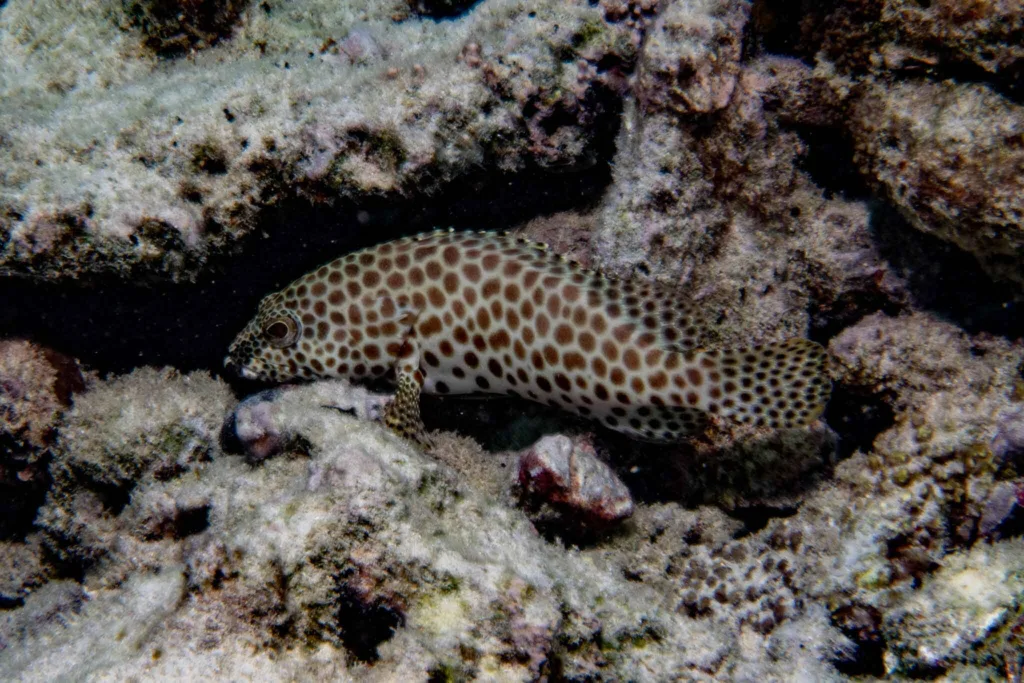
Honeycomb grouper is locally referred to as “lah faana” locally. Its head and fins are covered in dark brown spots with narrow pale interspaces. This fish lives in shallow water and is commonly found on patch reefs in lagoons at depths less than 20 meters. Crustaceans (crabs and shrimps) are its primary food, but it also eats fish. This species is the most common grouper found on protected shallow lagoon reefs. This grouper is incredibly delicious.
Camouflage grouper (Epinephelus polyphekadion)
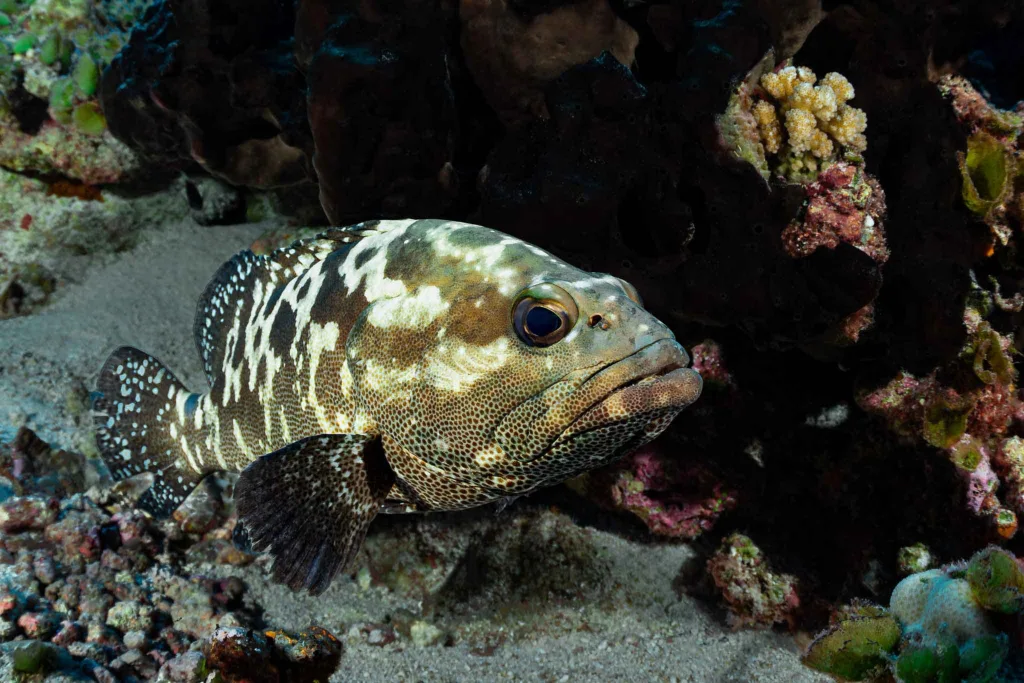
Camouflage grouper is mottled brown with small dark spots. The head and body have fairly distinct dark blotches; the blotch on top of the caudal peduncle is brownish-black and prominent. This grouper is referred to as “kula faana” locally. This grouper lives in lagoons or outer reefs at depths of up to 50 metres. It feeds primarily on benthic crustaceans such as crabs, but also on fish, squid, and snails.
Four saddle grouper (Epinephelus spilotoceps)
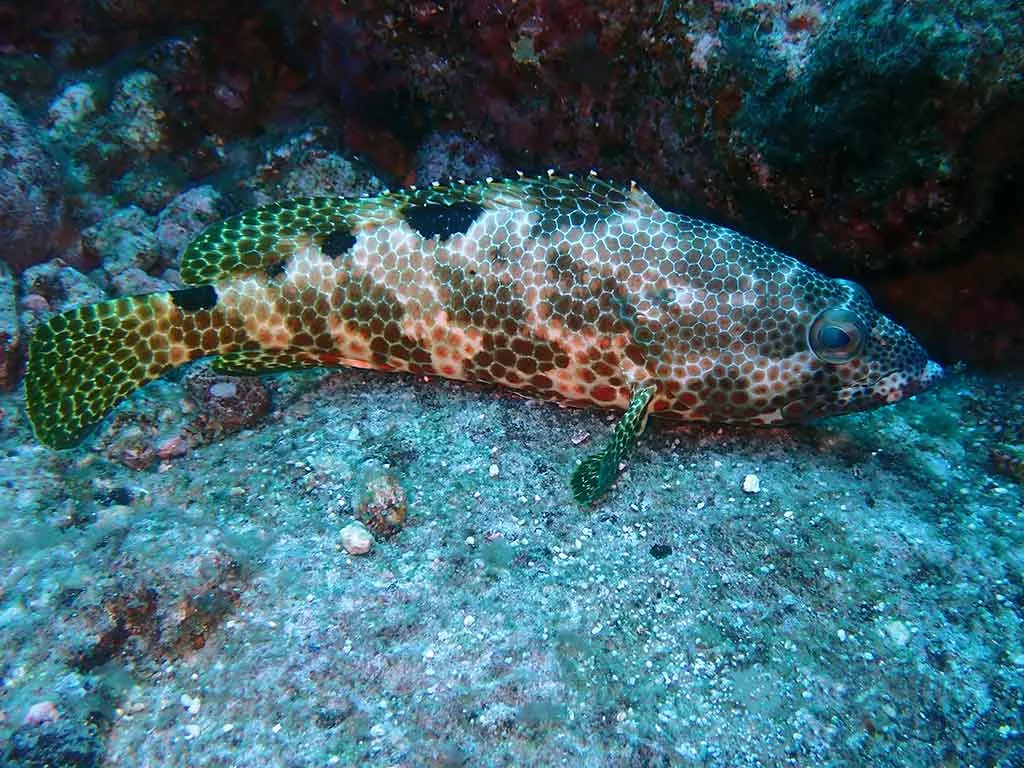
Four saddle grouper’s body is brownish -colored and covered in dark spots that form a pale mesh pattern. The grouper’s head is marked with small dark spots. This grouper lives on shallow-water coral reefs. This grouper is referred to as “asdhaan faana” locally. This fish is also a delicious grouper. This grouper is normally caught at sunset.
Greasy grouper (Epinephelus tauvina)
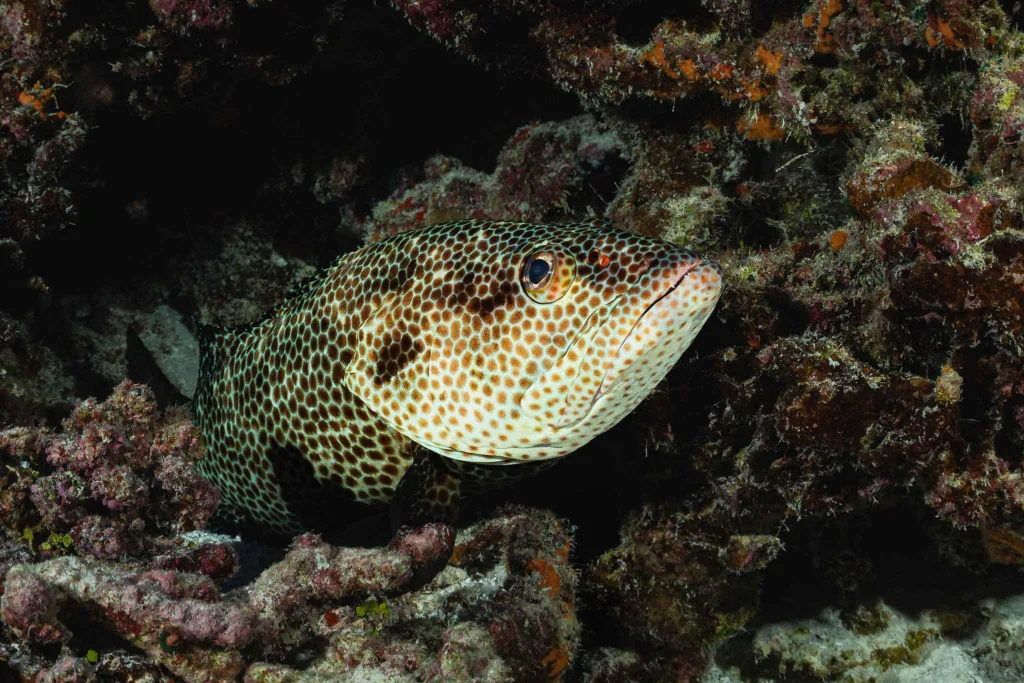
Greasy grouper is brown-grey with numerous orange-brown spots on its body and fins. It is typically found on coral reefs at depths ranging from 1 to 50 meters. We have discovered juveniles in tide pools along the reef flat. This grouper’s primary food source is fish. This grouper is commonly referred to as londhi faana.
